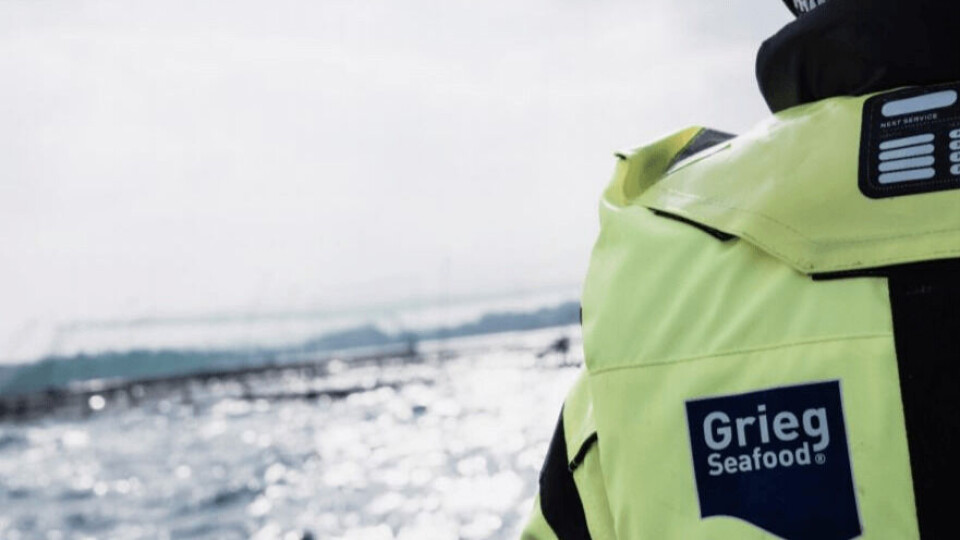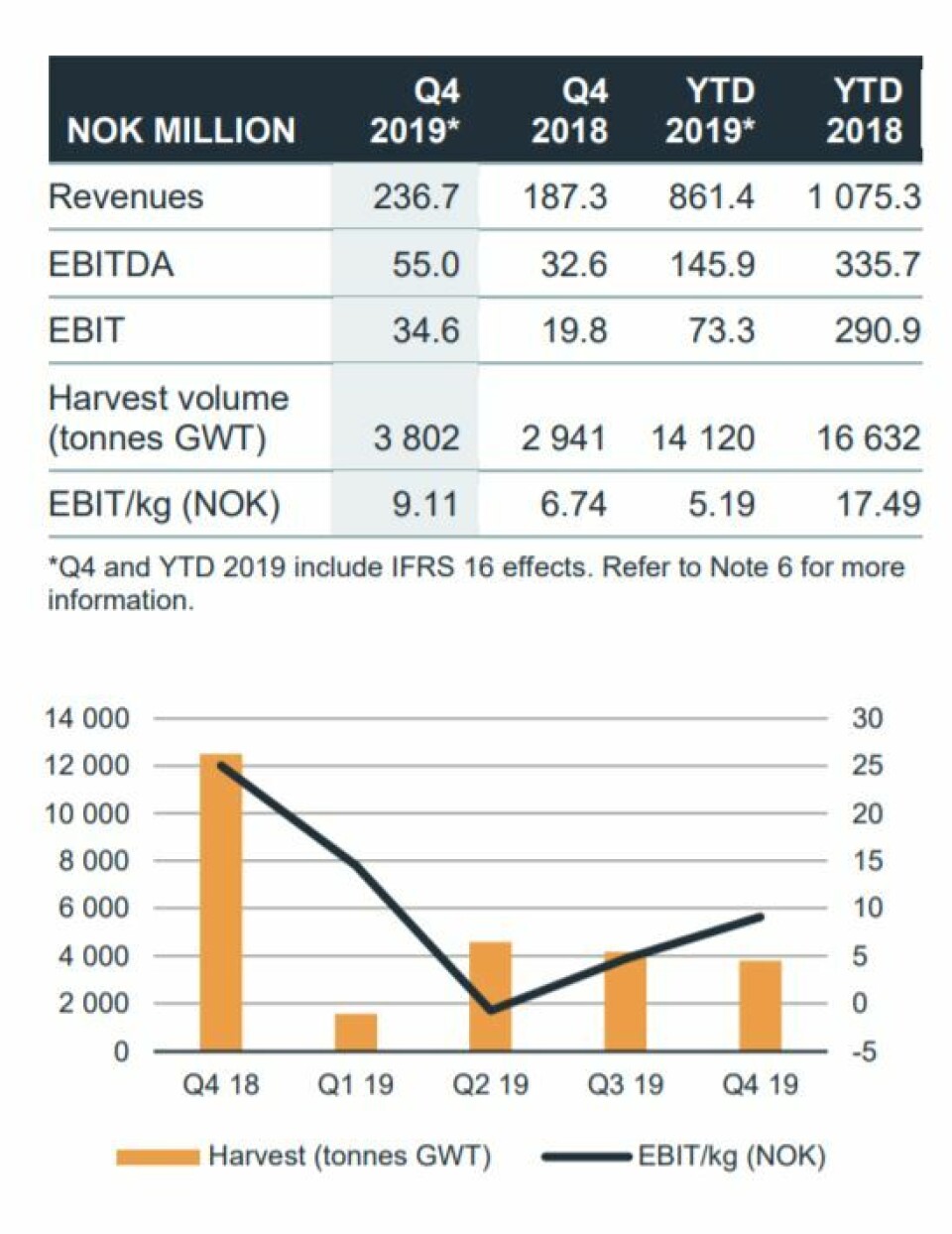
Grieg Shetland survival rate up but revenues fall
The 12-month survival rate of salmon produced by Grieg Seafood Shetland increased from 83% at the end of 2018 to 89% at the end of the fourth quarter last year.
That was achieved in the face of challenging biological conditions in Shetland in 2019 due to gill-related diseases, algae and plankton in combination with high sea lice pressure, Grieg Seafood said in its Q4 2019 report.
The improved survival rate was the result of healthier and more robust smolt, as well as continuous improvement of the handling and treatment of fish in the sea.

Lower average weight
But that was where the good news ended for the Shetland operation, which currently lags behind Grieg’s two Norwegian regions, Finnmark and Rogaland, and its operation in British Columbia in Canada.
Harvest volume in Shetland in Q4 2019 was 2,332 tonnes, a decrease of 37% compared to Q4 2018 and approximately 600 tonnes lower than expected, due to lower average harvest weight.
Revenues amounted to NOK 151.3 million, a decrease of 38% compared to Q4 2018.
Despite good quality, with a superior share of 90%, the average harvest weight was low, and the price achievement was lower than expected in the quarter.
EBIT per kg before fair value adjustment of biological assets was NOK -3.84, compared to NOK 1.29 in Q4 2018 and NOK -3.53 in Q3 2019.
For the full year, Grieg Seafood Shetland harvested 11,273 tonnes, a figure the company hopes to increase by more than half this year to 17,000 tonnes by focusing on initiatives to improve biosecurity and fish welfare.

Record harvest
Company-wide, Norwegian-owned Grieg Seafood has reported a record-high harvest of 83,000 tonnes for 2019 and expects to reach its target of 100,000 tonnes this year.
It intends to produce 150,000 tonnes a year by 2025, and has agreed to buy Grieg Newfoundland (Grieg NL), which is a separate company, to help achieve that. Grieg NL has not yet started farming but has the capacity to produce up to 45,000 tonnes a year, providing it gets the licences it is expecting.
In western Canada, Grieg Seafood BC harvested 3,802 tonnes in Q4, up 29% from the same period the year before, mainly due to the cyclical nature of site use and fallowing. For the whole of 2019 the BC operation harvested 14,210 tonnes, a drop of 2,512 tonnes compared to 2018. Grieg is guiding a harvest volume of 20,000 tonnes this year.
Smolt facility
EBIT per kg before fair value adjustment of biological assets was NOK 9.11 in BC, compared to NOK 6.74 in Q4 2018 and NOK 4.68 in Q3 2019.
Grieg said the expansion of its Gold River smolt facility is proceeding according to plan, and Grieg Seafood BC is expected to increase the smolt capacity from 500 tonnes to 900 tonnes by the end of 2020.
Grieg’s two Norwegian salmon farming divisions, Finnmark and Rogaland, were the best performers in 2019 and produced the majority (57,579 tonnes) of salmon.
Rogaland harvested 8,426 tonnes in Q4, an increase of 36% on the same period in 2018. Its harvest volume for the year was 25,217 tonnes.
Finnmark harvested 10,782 tonnes in Q4, similar to Q4 2018. Its harvest volume for 2019 was 32,362 tonnes, an increase of 2,588 tonnes compared to Q4 2018.























































